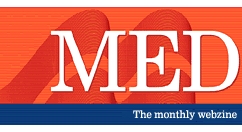 |
 |
 |
 |
 |
 |
|
|
||||||||||||||||||||||||||||||||||||||||||||||||||||||||
COLUMNS
|
Academic Writing: finding and referencing
sources Academic Writing tasks aim to find out how well you can research a topic, argue a point of view, evaluate evidence, and organize your thinking. In this series on Academic Writing I would like to provide general advice about different aspects of academic writing and what resources you can use for more specific advice. Identifying and evaluating resourcesOnce you have identified the different parts of an essay topic and established a basic framework, it is time to gather evidence, statistics, and other information. You should start by surveying a wide variety of books and other material that might be useful. These are what we call your 'sources' - the evidence you will need in order to write the essay. Your lecturers may supply a reading list. Here are some other things to consider:
Avoiding plagiarism and quoting sources directly In writing an essay, you may be tempted to copy straight from materials because you do not think you can write as well as the original writer, or you think that the reader might not know the original source and that you might get a better mark for your essay. Copying directly from another writer and pretending that their words or phrases are your own is called plagiarism. You must avoid this as it is a form of intellectual theft and is treated very seriously when it is discovered. You can avoid plagiarism by using the correct methods for quoting, paraphrasing, and referencing. Why and how should you quote?When you quote someone, you use their exact words in your text. Keep quotations as short as possible by quoting only the essential part of what the author says. Try to restrict yourself to quoting only if the original statement is forceful, well written, or contains ideas that are so controversial that you feel it is best that the exact words of the author are used, so that there can be no misunderstanding. ParaphrasingWhereas quoting means you use the exact words of the writer, paraphrasing means restating the words or ideas from a book or article in your own words. This is helpful as you can make the ideas fit into your writing style. You need to follow the rules of paraphrasing carefully in order to avoid being accused of plagiarism. Here is a procedure you can follow for paraphrasing:
Make sure you include the reference directly after the paraphrase in your text so that it is clear where you got the information from. There are many ways of showing that you are reporting the words of others. For example, you can say that the author:
You can also say: You can learn other ways of reporting and paraphrasing from your reading. You should include the page number in the reference because you are reporting on a particular part of a reference. Referencing in texts and in bibliographiesIn-text referencing is used when you are quoting or paraphrasing sources in your essay. A bibliography is a list at the end of your essay that shows which sources you have read or used to help you prepare your essay. Each academic subject has its own rules for writing references and your lecturer should supply you with clear guidelines on which system you should use. Be consistent when formatting references. Two common formats are the American Psychological Association (APA) and the Modern Language Association (MLA). There are websites that have up-to-date information on these systems, along with examples of in-text and bibliographic references. Academic writing books will also contain sections on these systems. Some are listed in the Further reading section. Here is a selection of websites and books that will tell
you more about academic writing:
Usage Notes
Next in the series • Structuring
an academic essay |
|||||||||||||||||||||||||||||||||||||||||||||||||||||||
|
|
||||||||||||||||||||||||||||||||||||||||||||||||||||||||